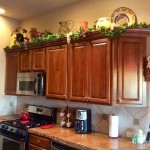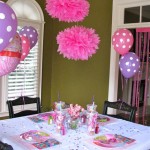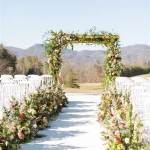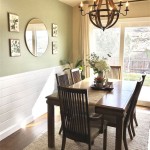How To Decorate Rustic Style Houses in Minecraft Java
Minecraft, particularly the Java Edition, offers vast opportunities for creative expression, especially in architectural design and interior decorating. One particularly popular style is rustic, characterized by its emphasis on natural materials, warmth, and a lived-in feel. This article will explore the key principles and techniques for effectively decorating rustic-style houses in Minecraft Java, ensuring a harmonious and authentic aesthetic.
Rustic design in Minecraft, as in real life, revolves around evoking a sense of history, simplicity, and connection to nature. This translates into a preference for wood, stone, and other minimally processed materials. Achieving this look requires careful selection of blocks, thoughtful arrangement of furniture, and a keen eye for detail, paying close attention to lighting and accents.
Choosing the Right Blocks for a Rustic Foundation
The cornerstone of any successful rustic build lies in the appropriate choice of blocks. Focusing on materials that appear raw, unfinished, and naturally textured is essential. This extends beyond basic structural elements like walls and floors to encompass decorative details.
Wood is, without a doubt, the most important element in a rustic palette. Oak logs (both regular and stripped), spruce planks, and dark oak variants are all valuable resources. Consider using a combination of these to create visual interest and depth. For example, using oak logs as structural supports, spruce planks for flooring, and dark oak for furniture can establish a well-defined sense of style.
Stone is also crucial. Cobblestone, stone bricks, and andesite provide a robust and earthy counterpoint to the warmth of wood. Integrating cobblestone walls, stone brick pathways, or even incorporating andesite into fireplaces or chimneys helps to ground the build and enhance its rustic appeal.
Other blocks that can be incorporated to add detail and texture include: hay bales (for a barn-like aesthetic), terracotta (especially in earthy tones), and even strategically placed dirt blocks (to simulate exposed earth). The key is to use these blocks sparingly and intentionally, ensuring they contribute to the overall rustic feel rather than detracting from it.
Avoid using overly processed or modern-looking blocks, such as smooth stone, quartz, or concrete, unless you plan to distress them considerably or use them in very small, carefully considered quantities. These blocks often clash with the naturalistic aesthetic of rustic designs.
Furnishing and Detailing the Interior
Once the basic structure is complete, the next step is to furnish and detail the interior. This is where careful planning and creative block usage can truly bring a rustic house to life. The focus should be on creating a comfortable, functional, and visually appealing space that reflects the principles of rustic design.
Furniture should be simple, sturdy, and often appear handcrafted. Tables can be constructed from wooden slabs and fences, with chairs made from stairs and signs. Beds can be draped with simple wool blankets and accented with rugs made from carpets. Chests and barrels provide ample storage while reinforcing the rustic aesthetic. Utilizing item frames with appropriate items inside (such as tools or food) can also enhance the lived-in feel of the space.
Lighting is crucial for setting the right mood. Avoid using bright, modern lighting options such as sea lanterns or glowstone blocks concealed under carpets. Instead, opt for candles, lanterns, and campfires. Campfires placed beneath carpets can simulate a hearth, creating a warm and inviting atmosphere. Lanterns can be hung from ceilings or placed on tables, while candles can be used to accent shelves and other surfaces.
Details matter. Incorporating small, natural elements can significantly enhance the overall aesthetic. Flower pots with plants, paintings depicting landscapes or wildlife, and even bone meal used to grow grass and flowers around the exterior can all contribute to a more immersive and believable rustic environment. Consider using armor stands creatively to display tools or clothing.
Utilize banner designs to create custom curtains, tapestries, or wall hangings. This allows for a high degree of personalization and the ability to introduce color and pattern while maintaining a rustic sensibility. Look for designs that incorporate simple geometric patterns, natural motifs, or earthy tones.
Avoid over-cluttering the space. Rustic design emphasizes simplicity and functionality. While a lived-in feel is desirable, too much clutter can make the space feel cramped and disorganized. Aim for a balance between practicality and aesthetics.
Incorporating Exterior Landscaping for a Seamless Transition
The transition between the interior of the house and the surrounding landscape should be seamless. Exterior landscaping plays a vital role in establishing the overall rustic aesthetic and connecting the build to its environment. Integrating natural elements and creating a sense of wildness and untamed beauty is essential.
Instead of manicured lawns and perfectly symmetrical gardens, opt for a more naturalistic approach. Use bone meal to encourage the growth of grass, flowers, and shrubs. Allow vines to climb the walls of the house, creating a sense of age and decay. Incorporate natural rock formations and uneven terrain into the landscape.
Pathways should be made from natural materials such as cobblestone, gravel, or dirt paths. Avoid using paved or artificial surfaces. Consider creating winding paths that lead through gardens, forests, or to other points of interest.
Water features can also enhance the rustic aesthetic. A small pond with lily pads, a babbling brook, or even a simple well can add a touch of tranquility and natural beauty to the landscape. Integrate natural elements such as rocks, logs, and vegetation around the water feature to create a more realistic and immersive environment.
Consider building a small vegetable garden or herb garden. This not only adds to the rustic charm but also provides a practical source of food. Plant crops such as carrots, potatoes, and wheat in rows, and fence them off with wooden fences to protect them from animals.
Finally, pay attention to the surrounding environment. Consider the biome in which the house is built and tailor the landscaping accordingly. For example, if the house is located in a forest, incorporate trees, shrubs, and undergrowth into the landscape. If the house is located near a mountain, incorporate rock formations and alpine vegetation.
By carefully considering the blocks, furniture, lighting, and landscaping, one can create a truly authentic and immersive rustic experience in Minecraft Java. The key is to embrace natural materials, simple designs, and a connection to the environment. With a little creativity and attention to detail, any player can build a rustic house that feels both comfortable and timeless.
Experimentation is encouraged. The specific implementation of rustic design principles will vary depending on personal preferences and the unique characteristics of the Minecraft world. Embrace the freedom to express individual creativity and develop a unique rustic style.
Ultimately, the goal is to create a space that feels warm, inviting, and connected to nature, reflecting the simplicity and authenticity that defines rustic design. Through careful planning, thoughtful execution, and a keen eye for detail, anyone can build a beautiful and functional rustic house in Minecraft Java.

How To Build A Rustic Farm House In Minecraft

Embrace Rustic Elegance Captivating Cottage Designs In Minecraft

Minecraft Large Wooden House Tutorial Survival Design

How To Build A Farm House In Minecraft

Minecraft How To Build A Farmhouse Tutorial

Minecraft Aesthetic Cottagecore House Tutorial Cottage Mizuno S 16 Craft Resource Pack

Cottage Rustico Di O In Minecraft

Minecraft Large Wooden Cabin Tutorial

The Best Minecraft House Ideas Cute Farm

Mastering Minecraft Roofs A Comprehensive Guide Pinecone Academy
Related Posts







